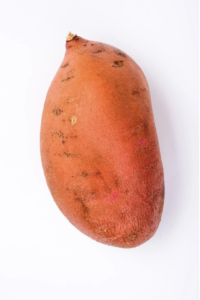Pacific Migration, Existence, and Paradox: A Deep History
The discipline of deep history must tread water (to excuse a pun) carefully as it considers and weighs the importance (or non-importance) of various aforementioned “submerged” archaeological finds of the twenty-first century. Many ambitious scholars abound, ready to capitalize on scholarly confusion and upheaval. For example, a recent study in Latin American Antiquity has claimed to complicate the aforementioned “surf or turf debate” by using material from a central Mexican cave as so-called evidence of early arrival into North America at 30,000 years ago, which is an extraordinary chronological claim. Although Andrew Somerville, the principal investigator in that project, says that his team “wasn’t [even] trying to weigh in on [the surf or turf] debate or even find really old samples… we were surprised,” other contemporary literature has appeared skeptical of these findings and of the academic intention behind these claims more generally.
Academic uncertainty towards Oceanic anthropology and history might be best represented in "Pacific Migration, Existence, and Paradox: A Deep History" by a simple food item known as a yam. Yes, you read that right - after all, the tuber is native to South America, but there have also been yams in Polynesia as far back as 1,000 years ago. Given these facts, “Where do yams come from?” becomes a surprisingly difficult question to answer. It is only after comparing the DNA of Polynesian and South American yams that scientists now more accurately suspect that someone either brought them back to Polynesia after visiting South America, or islanders brought them from South America when they were exploring the Pacific Ocean; in any case, the jury remains out.
And lest one think that the origins of the yam was not confusing enough, the ancestry of chickens before they were dispersed across the Pacific is similarly difficult to ascertain. Things came to a controversial head there in 2007, when chicken bones in South America were heralded as evidence for apparent Polynesian contact with the Americas that pre-dated Columbus. This analysis, using the same data, was heavily criticized in a later 2014 article, and the debate remains.
Trans-Oceanic Tubers

Yam
genus Dioscorea
South America, Polynesia, and others
[Bonus Material: A Gallery Object That Could Have Been]
The debates over the origins and ancestry of the yam and the chicken, respectively, serve as simple proxies in this exhibit for more dangerous ideas: namely, confusion, misinformation, and perhaps even academic dishonesty with respect to literature on Pacific migration. An alternative object that was also considered was a Jomon pot, in reference to Smithsonian archaeologist Betty Meggers’ wildly incorrect theory that Japanese fisherman had trans-Pacific contact with the Americas 5,000 years ago.
The Jomon pot rivals the yam or the chicken as equally representative over the broader themes of academic confusion with respect to Oceanic studies, but curators were ultimately too concerned that visitors would not understand the context of the item and thus be left with incorrect understandings of Pacific migration.
The Jomon pot rivals the yam or the chicken as equally representative over the broader themes of academic confusion with respect to Oceanic studies, but curators were ultimately too concerned that visitors would not understand the context of the item and thus be left with incorrect understandings of Pacific migration.